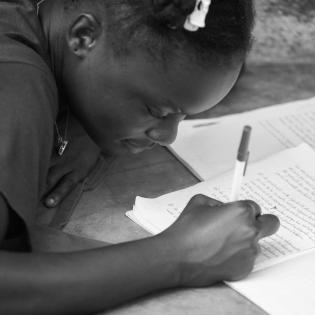Painting Pictures with Poetry
Youth will use metaphor, simile and personification to create imagery in their writing and recognize philanthropy in poetry. The learners will also become familiar with the poet laureates, Billy Collins and his writing.
- define and design poetry including metaphors and similes.
- identify philanthropy in the famous quotations of others.
- Poet Laureates (Handout One)
- Poetry of Billy Collins (Handout Two)
Billy Collins https://www.poets.org/poets/poets.cfm?prmID=284 Information provided on Billy Collins.
Steven Barclay Agency: Billy Collins Biography http://www.barclayagency.com/collins.html Information provided on Billy Collins.
Instructions
Anticipatory Set:
Put this quote on the board: The woods are lovely, dark and deep. But I have promises to keep, And miles to go before I sleep, And miles to go before I sleep. -Robert Frost
Have students discuss what images form in their minds as a result of this poem and what it means.
Put the following quotations on the board and discuss their images and messages as was done with the first quotation. If persons follow the messages of the quotations, how are they automatically acting philanthropically?
- “Life is an exciting business, and it is most exciting when it is lived for others.” Helen Keller
- “If I can help somebody as I pass along, if I can cheer somebody with a word or song, if I can show somebody he’s traveling wrong, then my living will not be in vain.” Martin Luther King, Jr.
- “As the twig is bent, so grows the tree. If I touch a life, a life will touch me. If I give someone hope, hope is given to me. As the twig is bent, so grows the tree…” David Morris
- “Kindness is the language which the deaf can hear and the blind can see.” Mark Twain
- “There are only two ways of spreading light¾to be the candle, or the mirror that reflects it.” Edith Wharton
- “Ask not what your country can do for you. Ask what you can do for your country.” John F. Kennedy
Explain to students that poetry often paints visual images with conventions such as metaphor, simile and personification. Define the three conventions and then use the quotes from the first activity to identify examples of metaphor, simile and personification.
- A metaphor can be described as a figure of speech in which a thing is referred to as being something that it resembles. For example, a fierce person can be referred to as a tiger or an uncommunicative person as being as “silent as stone”. A metaphor is a figure of speech that makes a comparison describing one thing as another, suggesting a likeness between them. It does not use “like” or “as.”
- A simile is a comparison that is explicitly stated using the word “like” or “as.”
- Personification is a figure of speech in which human qualities are attributed to an animal, object or idea.
Explain to students that poetry often paints visual images with conventions such as metaphor, simile and personification. Define the three conventions and then use the quotes from the first activity to identify examples of metaphor, simile and personification.
Ask students if they are familiar with the quote from John F. Kennedy’s inaugural address: “Ask not what your country can do for you. Ask what you can do for your country.” Tell them that this quote inspired many young people at the time to join the Peace Corps. Give a little background on the Peace Corps and the effect that Kennedy had on the nation and young people of that time. How does Kennedy’s quote help improve the common good of a community or nation?
Tell students that one of Kennedy’s favorite poems was “Stopping by Woods on a Snowy Evening.” The quote “But I have promises to keep...” is from that poem. Explain that the author of this poem is Robert Frost and that he was the poet laureate of the United States in the 1950s.
Explain what a “poet laureate” is. This information is included in Poet Laureates (Handout One). Tell the learners that one of the former poet laureates is Billy Collins. Either read or give examples of his poems to students and discuss them. (See Bibliographical References or use Poetry of Billy Collins, Handout Two.)
Discuss the imagery found in one or two of his poems. Find examples of metaphor, simile and personification.
Tell students that they are to write a statement about philanthropy that uses metaphor, simile and personification. One example is: Philanthropy is a big, cuddly, stuffed bear that keeps strangers warm.
The statements about philanthropy using metaphor, simile and personification may be used as an assessment.
Handouts
Philanthropy Framework
-
Strand PHIL.I Definitions of Philanthropy
-
Standard DP 01. Define Philanthropy
-
Benchmark MS.1 Define philanthropy as individuals and organizations providing their time, talent, and/or treasures intended for the common good throughout history and around the world. Give examples.
-
-
